For someone who grew up in one of the most storied regions for chasing fall foliage, I don’t think I’ve ever understood the scale of allure that draws millions to New England from mid-September to late October. I can appreciate the way that fall colors light up the hills and valleys of the northeast, and how that irreplicable crunch of fallen leaves underfoot seems to make your nerve endings sigh. But spending upwards of $300 on a dated motel room—or driving many more hundreds of miles—just to stare at trees?
I still can’t fully wrap my head around it; particularly because fall foliage is a lot more more pervasive than seasonal travel trends might have you believing. While it’s tough to beat the northeast for sheer concentration of foliage, there are rustling corridors of auburn and gold throughout the U.S. and Canada. One of the reasons why I signed on to research and write a guidebook about fall foliage this fall—which is what I’ve been on the road doing for the last 1.5 months—was the opportunity to explore several of these corridors. But I also wondered if 7 solid weeks of leaf peeping, for occupational purposes, might finally help me see fall through the eyes of the meandering masses.
At the moment, I’m almost on my way back to Boston. I’ve just pulled off of I-495 and I’m posted up at a McDonalds right outside of Washington D.C., pilfering the free WiFi and caffeinating for the final push to Delaware; the last stop of my field research tour. The trees down here are still offering a toasty showcase of fall colors, and given what a strange and sporadic season we’ve had for fall colors, each yellowy bend in the road feels like a gift. (Southern Vermont, by contrast, had become a great mass of sticks as early as the first weekend of October!) And in a way, my current rest stop—one of the United States’ most ubiquitous and dreary fast food chains, as opposed to a charming country cafe with cider donuts—speaks to something that all of this foliage travel has really impressed upon me; something that might be a hard sell for reading audiences.
Consider how the word “hiking” almost always triggers images of very specific, usually grandiose natural landmarks. Yosemite’s Half Dome. Those red cliffs on Prince Edward Island. The Appalachian Trail and its legions of grizzled thru-hikers. When people are getting acquainted with hiking, these landmarks are often among their first adventure destinations—in the same way that fall foliage road trips typically involve setting the controls for the White Mountains or the Catskills. And it makes sense. When you are flirting with a new kind of experience, the most cranked up, Instagrammable version of that experience is often going to be the most inviting place to start. The experience might be a one-off, and if that’s the case, coming back home with something that you can revisit in your dreams and show off to your friends is an ideal outcome. If you live in a place where there are no deciduous trees, and you have one chance to see the fall transition in a region that does get colorful, I would urge you to head for the bustling and superlative leaf peeping venues. Drive the Kancamagus Highway! Wander those sepia woods in Lenox! And have a late lunch picnic in the hills of Arnold Arboretum!
But more broadly, I would encourage something less orthodox. When you’re plotting a fall foliage road trip and trying to figure out where exactly you should drive or walk, don’t spend too much time thinking about which byways or trails will be the prettiest. Because the fall foliage showcase is impossible to predict, regionally speaking. It can sneak up and surprise you with its vivid colors; often in some very unexpected places.
A few days ago, I was driving through the Laurel Highlands of Pennsylvania—the hills where Frank Lloyd Wright’s Fallingwater house is nestled. A lot of Fallingwater photos depict the house against a backdrop of orange leaves, festooned with the plume-like cascades. But both of these features were muted during my visit. Most of the leaves had come down, and modest rainfall had reduced the falls to a trickle. It was still a privilege and a little thrill to be there, at this mythic architectural wonder that I had only seen depicted on film and with Lego bricks. But it kind of felt like showing up to a party that The Prodigy had been playing, moments after they had finished their set.
My destination for the evening was Pittsburgh—one of my favorite U.S. cities, where hundreds of staircases hidden in the hills offer a unique foliage chasing experience of their own. But to get there from Fallingwater, I had to drive one of the most loathed roads in the state. Pennsylvania Route 51 is a nightmarish throughway of tight lanes, aggressive gridlock, ugly commercial scenery on both sides, and traffic lights every 200 feet or so. Navigating the byway was making me sweat through the back of my shirt, purely from anxiety and frustration, as I watched my ETA on Google Maps get later and later. But as I reached the top of a hill where the road was flanked by gas stations and dealerships, I saw something unexpected—an explosion of rustling red trees. The tree canopy here was popping off, in too many shades to count! It was an improbably bucolic backdrop for the consumerist hellscape of Route 51 and the effect that it had on me was immediate and comforting. It felt like I had just run into an old buddy while sitting in a packed emergency room and waiting a nurse to call my name.
Whether you’re experiencing fall foliage for the first and only time, or co-living with it each September and October, the unpredictability of its presence can enhance those special moments when you do connect with the leaves. I wouldn’t exactly liken the fall foliage to a close friend; because a lot of us tend to see close friends often, thanks to regular, planned hang-outs. Fall foliage is more like an old lover that you sometimes reconnect with, spontaneously and intensely. Whether it’s a coffee together or a night together, you both know that this surprise reunion is fleeting, and that’s okay. You let it happen, and when it’s time to part ways, you’re a little blue. But you’re also grateful.
That, in my opinion, is the emotional pinnacle of what foliage chasing can be. Simply plotting a list of high profile stops for a foliage trip and checking them off is a more consumptive experience—satisfying to a point, but more limited in what it may evoke. Take it from me. Making lists of places to pull over, walk around, and take photos has been the backbone of my working life since the latter half of September! My system is positively overloaded on foliage, to an extent where I’m probably going to need a few days in the most pavement-heavy neighborhoods of New York or LA to balance out. And to be sure, these fall foliage road trip itineraries with highlighted stops for food, drink, and ambience, will be the backbone of my guidebook. But each foliage itinerary will also include a lot of breathing room—a solid amount of driving through territory that might look like nowhere on a map or even at first glance, but where the calming warmth of autumnal leaves may materialize at any moment, taking your breath away.
Just the other day, this happened to me again in the middle of West Virginia. I was on my way to Parsons—one of the northernmost towns along the Seneca Skyway scenic road, which loops around the roly-poly Monongahela National Forest. The seemingly nondescript route that I followed southeast to Parsons ended up being more visually stunning than the scenic byway itself! West Virginia Route 72 hugs the curves of the Cheat River through wooded hollows and past desolate farms, with topography that had me shifting into lower gears frequently. By the time I reached the little town and sidled into Piccolo Paula’s Cafe for a killer steak salad, the look in my eyes probably registered to the server as something between “in love” and “just dismembered and buried a body behind the gas station.” When placing my order, I had a difficult time getting the words out properly and I had to start over. Perhaps it was because I had spent the last few days on various roads, with relatively limited human intereactions.
Or maybe this is just your brain on foliage.


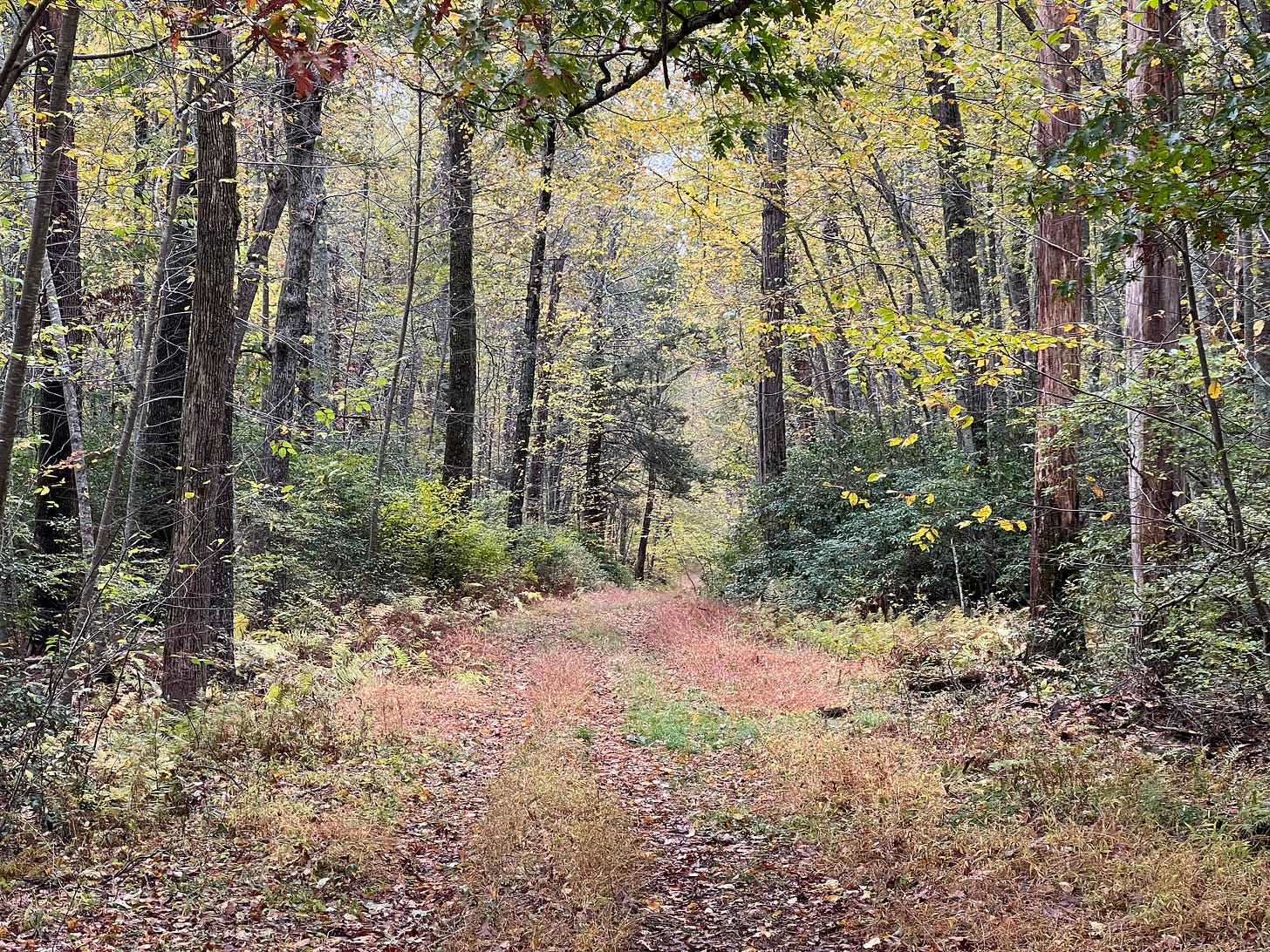
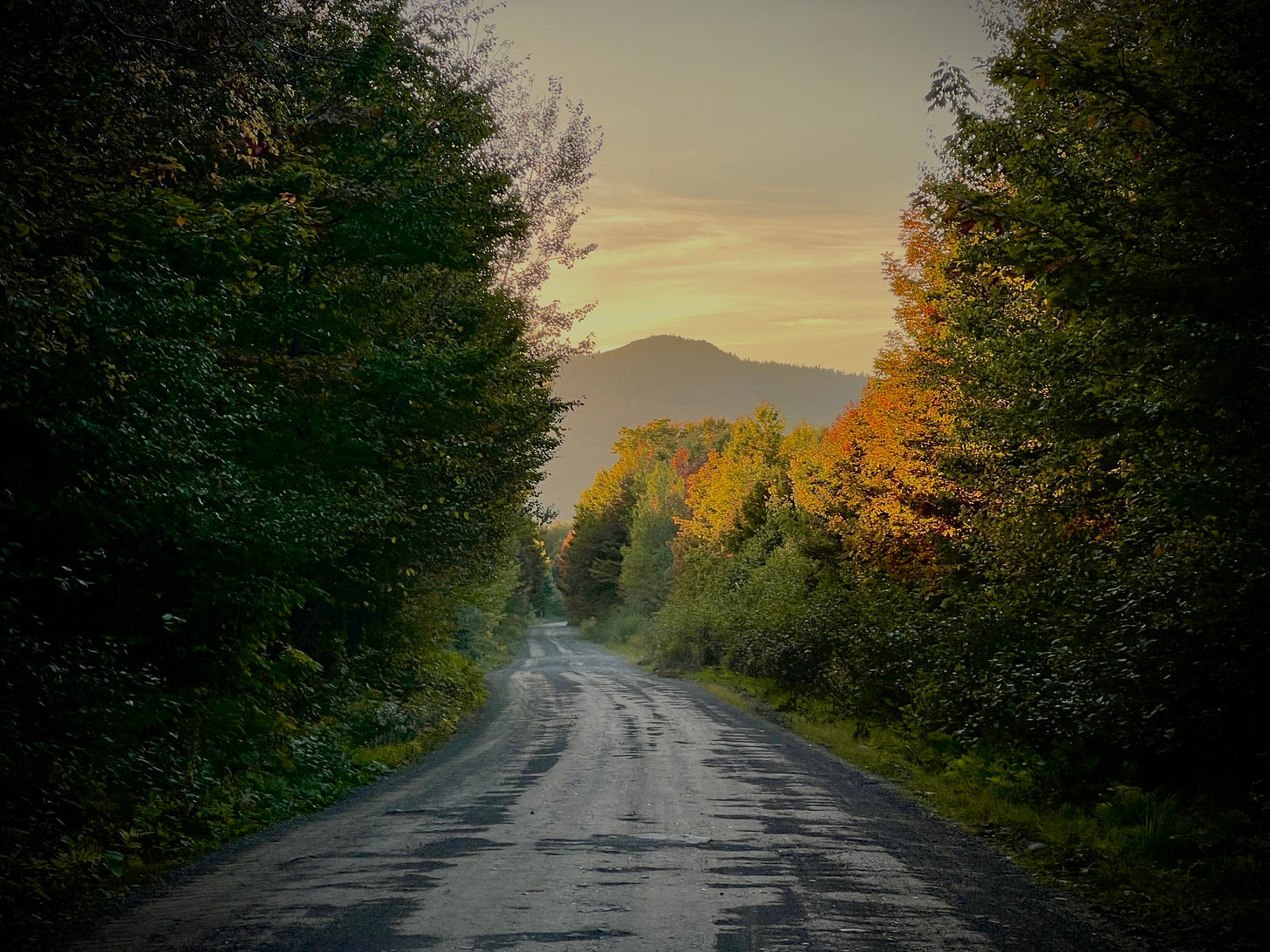
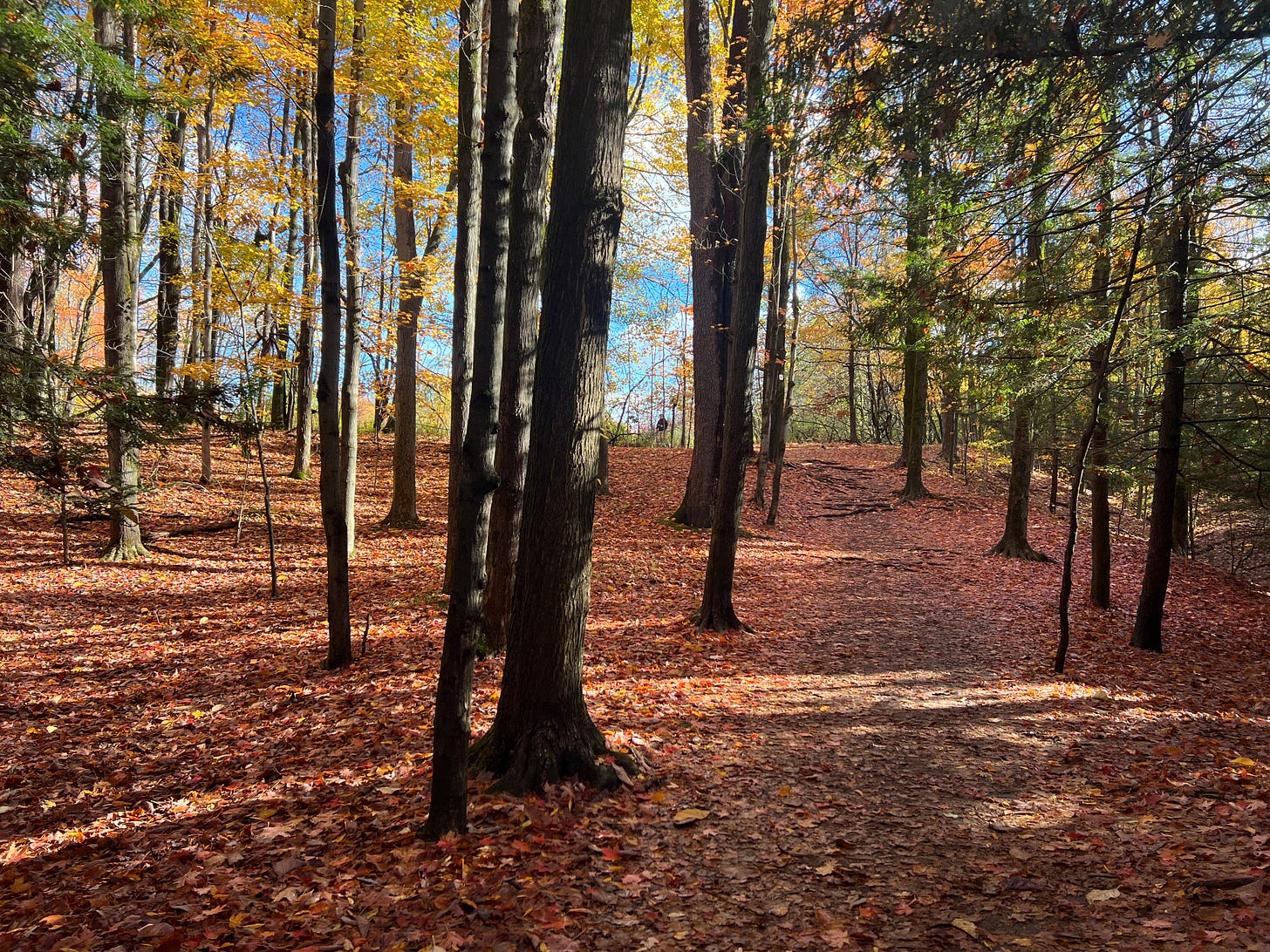
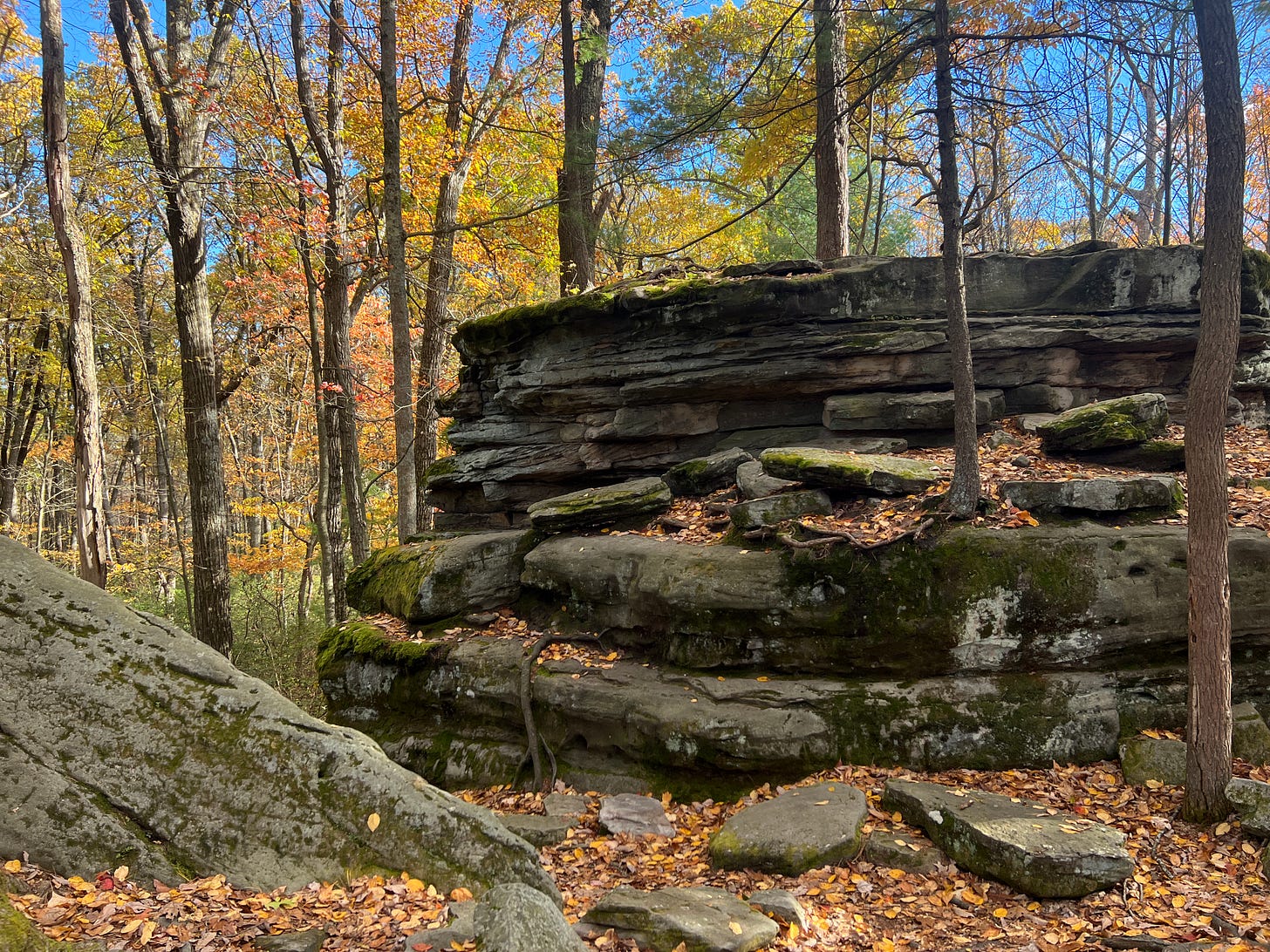
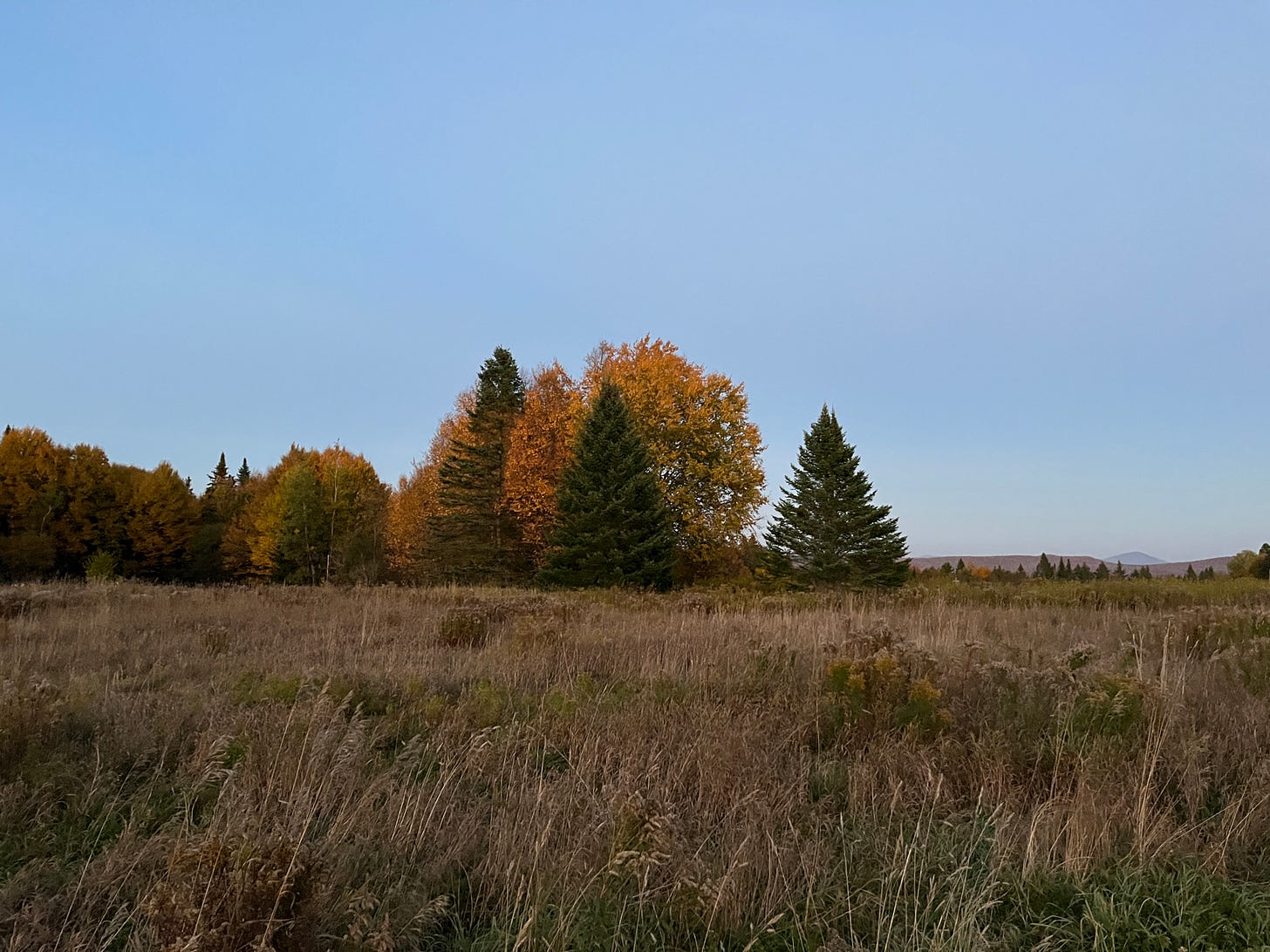

Thank you for this lovely essay. When I first moved from Texas to Boston late in a summer over 20 years ago, everyone said I should go to Vermont to see the fall colors, but I was enthralled every time I ventured onto the sidewalks of Brighton that fall. And still am!
I’ve seen incredibly beautiful fall foliage colors all over NJ, PA and New England but one of my favorite places to see uniquely colorful leaves is on the block of Leroy St. in NYC just east of Hudson St. The entire block is lined with ancient ginkgos that turn a buttery deep yellow and all fall off in unison carpeting the street and sidewalks in lush gold. It’s magic.